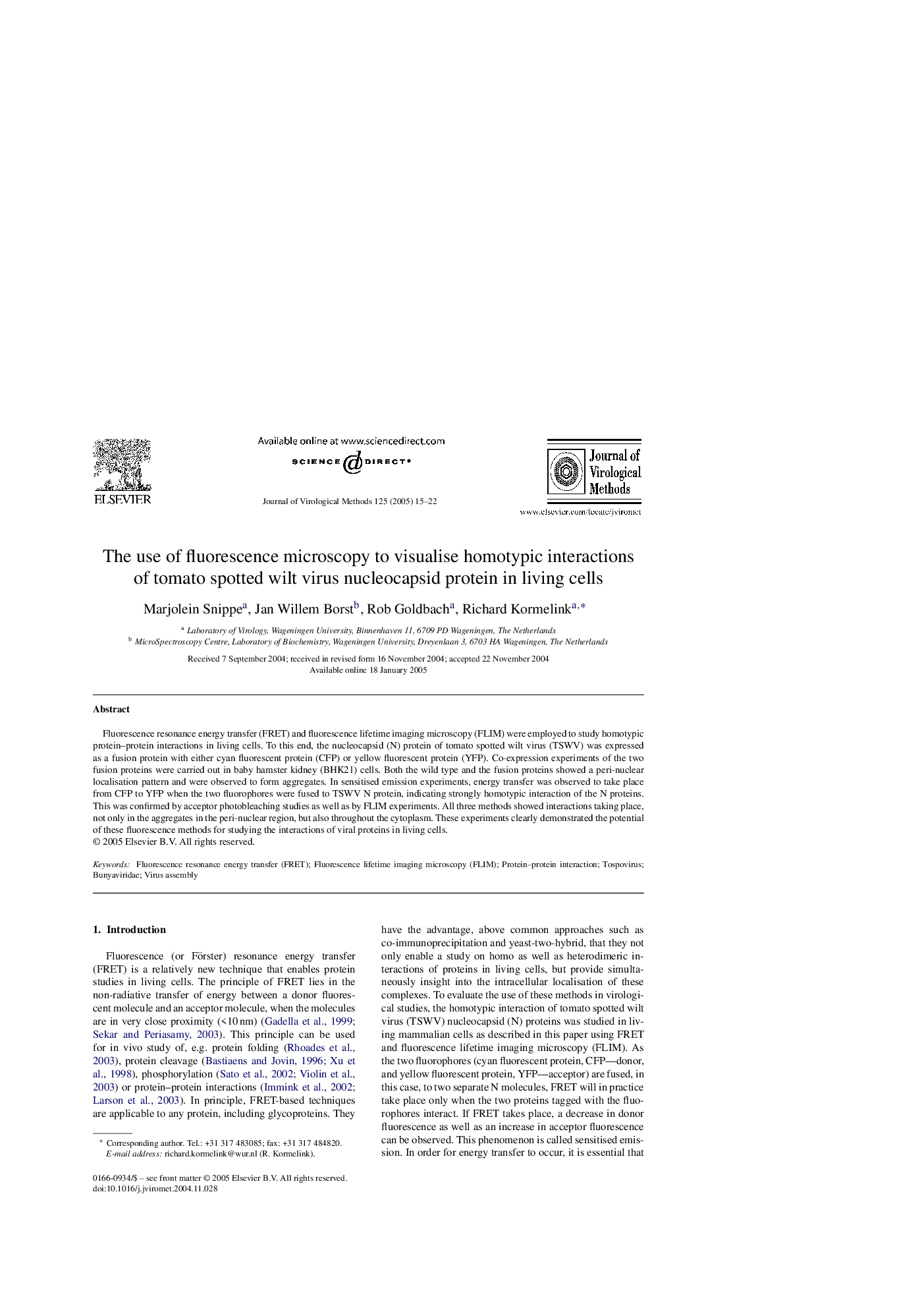| Article ID | Journal | Published Year | Pages | File Type |
|---|---|---|---|---|
| 9279521 | Journal of Virological Methods | 2005 | 8 Pages |
Abstract
Fluorescence resonance energy transfer (FRET) and fluorescence lifetime imaging microscopy (FLIM) were employed to study homotypic protein-protein interactions in living cells. To this end, the nucleocapsid (N) protein of tomato spotted wilt virus (TSWV) was expressed as a fusion protein with either cyan fluorescent protein (CFP) or yellow fluorescent protein (YFP). Co-expression experiments of the two fusion proteins were carried out in baby hamster kidney (BHK21) cells. Both the wild type and the fusion proteins showed a peri-nuclear localisation pattern and were observed to form aggregates. In sensitised emission experiments, energy transfer was observed to take place from CFP to YFP when the two fluorophores were fused to TSWV N protein, indicating strongly homotypic interaction of the N proteins. This was confirmed by acceptor photobleaching studies as well as by FLIM experiments. All three methods showed interactions taking place, not only in the aggregates in the peri-nuclear region, but also throughout the cytoplasm. These experiments clearly demonstrated the potential of these fluorescence methods for studying the interactions of viral proteins in living cells.
Keywords
Related Topics
Life Sciences
Immunology and Microbiology
Virology
Authors
Marjolein Snippe, Jan Willem Borst, Rob Goldbach, Richard Kormelink,
